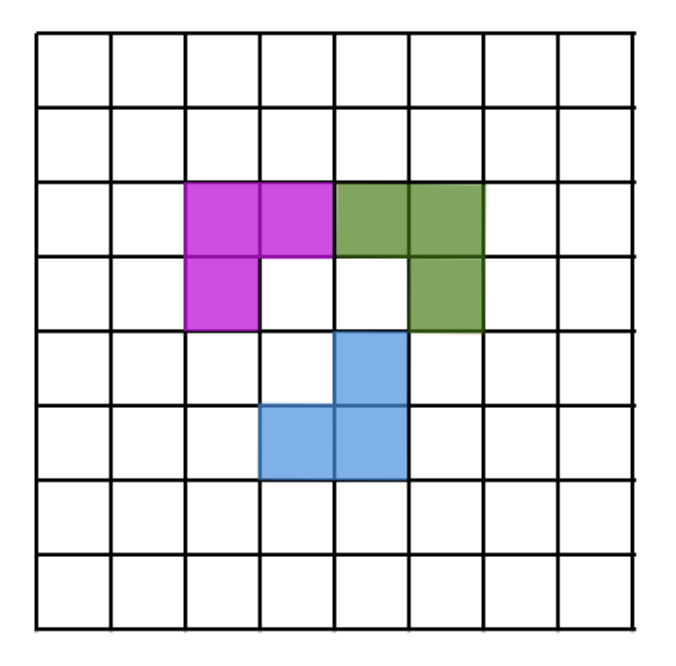Problems
Let’s denote any two digits with the letters \(A\) and \(X\). Prove that the six-digit number \(XAXAXA\) is divisible by 7 without a remainder.
The numbers \(p\) and \(q\) are such that the parabolas \(y = - 2x^2\) and \(y = x^2 + px + q\) intersect at two points, bounding a certain figure.
Find the equation of the vertical line dividing the area of this figure in half.
The water level in a pool is given by a quadratic function \(h(t) = at^2 + bt + c\), where \(t\) is measured in hours.
At the moment when the pool is completely drained, say at time \(t_0\), we have \(h(t_0) = 0\) and \(h'(t_0) = 0\).
It is also known that after the first hour, the water level has dropped to exactly half of its original value: \(h(1) = \tfrac{1}{2} h(0)\).
How many hours does it take for the pool to drain completely?
On an 8×8 grid (like a chessboard), an L-corner is a shape made of 3 little squares of the board that touch to make an L. You can turn the L any way you like. We place the L-corners so that none overlap. What is the fewest L-corners you must place so that no more L-corners can be added anywhere? Here is an example of how three L-corners may look like:

Three circles are constructed on a triangle, with the medians of the triangle forming the diameters of the circles. It is known that each pair of circles intersects. Let \(C_{1}\) be the point of intersection, further from the vertex \(C\), of the circles constructed from the medians \(AM_{1}\) and \(BM_{2}\). Points \(A_{1}\) and \(B_{1}\) are defined similarly. Prove that the lines \(AA_{1}\), \(BB_{1}\) and \(CC_{1}\) intersect at the same point.
The function \(f (x)\) is defined on the positive real \(x\) and takes only positive values. It is known that \(f (1) + f (2) = 10\) and \(f(a+b) = f(a) + f(b) + 2\sqrt{f(a)f(b)}\) for any \(a\) and \(b\). Find \(f (2^{2011})\).
On a chessboard, \(n\) white and \(n\) black rooks are arranged so that the rooks of different colours cannot capture one another. Find the greatest possible value of \(n\).
Does there exist a real number \({\alpha}\) such that the number \(\cos {\alpha}\) is irrational, and all the numbers \(\cos 2{\alpha}\), \(\cos 3{\alpha}\), \(\cos 4{\alpha}\), \(\cos 5{\alpha}\) are rational?
Solve the inequality: \(\lfloor x\rfloor \times \{x\} < x - 1\).
Let \(x_1, x_2, \dots , x_n\) be some numbers belonging to the interval \([0, 1]\). Prove that on this segment there is a number \(x\) such that \[\frac{1}{n} (|x - x_1| + |x - x_2| + \dots + |x - x_n|) = 1/2.\]